
English: Jesus Christ – detail from Deesis mosaic, Hagia Sophia, Istanbul (Photo credit: Wikipedia)

English: The Last Supper of Jesus Christ (Photo credit: Wikipedia)

Stained glass window of the sacred Heart of Jesus Christ in the former Mosque (Cathedral) of Cordoba, Spain (Photo credit: Wikipedia)

The Classic of Rites was one of the Five Classics of Confucianism; it described social forms, ancient rites, and court ceremonies. (Photo credit: Wikipedia)

Deutsch: Zhou Dunyi (1017-1073) Zeitgenössische Steinabreibung (Photo credit: Wikipedia)
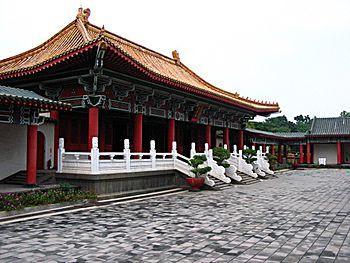
The Confucian Temple on Lotus Lake, in Kaohsiung City, Taiwan (Photo credit: Wikipedia)

A Confucian ritual ceremony in Autumn in Jeju, South Korea. After the ritual ceremony, they burn anstral tablets made of paper. (Photo credit: Wikipedia)
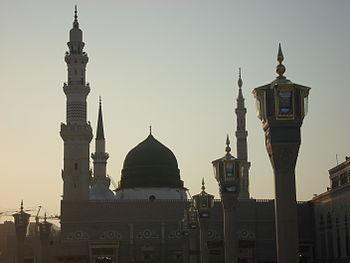
English: Tomb of Muhammad in Madinah, Saudi Arabia (Photo credit: Wikipedia)
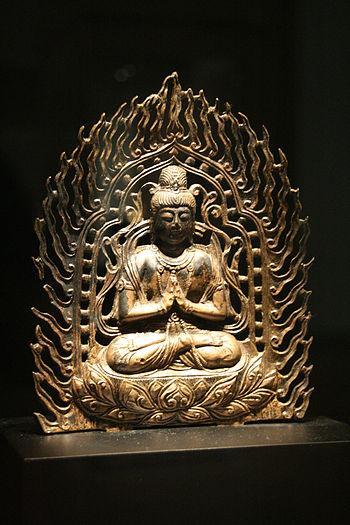
Korean Budda statue (Photo credit: Wikipedia)

King Abdullah ibn Abdul Aziz in 2002 (Photo credit: Wikipedia)
What is culture? How does it play itself out in social structures, religious and ethical systems, language, and education? The need for cross-cultural literacy and an appreciation of the impact of culture on competitive advantage are all addressed in Chapter 4.
Here is my Pinterest Board about Culture: http://www.pinterest.com/socialmediaevie/culture/
Managers need to be aware that cultural differences because their “cultures vary and have a profound difference in social structure, religion, language, education, economic philosophy, and political philosophy.”
Culture Learning Objectives:
Know what is meant by the culture of a society.
Identify the sources that lead to differences in social culture.
Identify the business and economic implications of differences in culture.
Understand how differences in social culture influence values in the work place.
Develop an appreciation for the economic and business implications of cultural change.
This chapter explores the role of culture in international business: how differences in
culture across and within countries can affect the practice of business.

Saudi Arabia is the largest net exporter of oil in the world (Photo credit: Wikipedia)
The opening case explores the influence of Saudi Arabia’s culture on business and how business is conducted in the country. The implications of the Saudi culture for companies operating within or with the country is important to understand.
“Saudi Arabia’s culture reflects the strong traditions of both Islam and Bedouin beliefs. Prayer times are strictly observed, women have little freedom, and Western expatriates are frequently the targets of
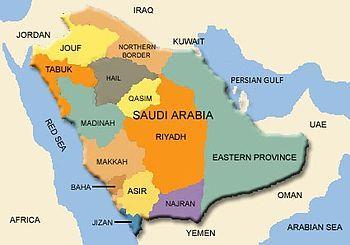
English: Saudi Arabia (Photo credit: Wikipedia)
terrorist attacks. In addition, the concept of time is viewed quite differently and values including loyalty and status are important as are strong interpersonal relationships. Companies doing business with the country must be aware of these cultural differences and adapt accordingly.”
Consider the following questions:
1. How do long standing cultural traditions in Saudi Arabia shape the country’s business environment. How should Westerners approach a business meeting in Saudi Arabia? Is there a difference if you are a Western woman?
2. How do Saudi Arabians feel about manual labor and behavior that might be considered menial or servile. Discuss the implications of this value system. How does it impact companies doing business in the country?
3. Consider the restrictions put on Saudi Arabian women. How do restrictions on Saudi women change the way products are marketed toward women?
To explore business opportunities in Saudi Arabia in more detail, consider {http://www.doingbusiness.org/data/exploreeconomies/saudi-arabia}
OUTLINE OF CHAPTER 4: DIFFERENCES IN CULTURE
Business success requires cross-cultural literacy. Managers need an understanding of the culture, or cultures, that prevail in the countries where they do business.
“Culture is a system of values and norms that are shared among a group of people. Values are abstract ideas about what a society believes to be good, right, and desirable. Norms are social rules and guidelines that prescribe the appropriate behavior in particular situations.”
The cost of doing business in a country is influenced by culture – different cultures are more or less supportive of the capitalist approach to production. Culture is dynamic.
Values and norms are the basic components of culture. Norms can be further divided into folkways and mores.
Values include attitudes towards concepts like freedom, honesty, loyalty, justice, responsibility, and personal relations including marriage. Norms shape the actions of people towards one another. Norms can be divided into folkways and mores.
Understanding Culture, Society and the Nation State. A nation-state can have a uniform culture; or within a nation-state multiple cultures can exist, and cultures can also cut across national borders.
Understanding theDeterminants of Culture: Culture is an evolutionary product of a number of factors. Political philosophy, economic philosophy, education, dominant language, social structure, and dominant religion are all determinants of culture.
“The social structure of a country can be described along two major dimensions: individualism vs. group, and degree of stratification into classes or castes.” A focus on the individual and individual achievement is common in many Western societies.
An emphasis on individual achievement has positive and negative implication. Entrepreneurs lke Sam Walton, Steve Jobs, and Bill Gates are common in this type of culture. They took chances, tried new things, and succeeded. Conversely, individualism can lead to a lack of company loyalty and failure to gain company-specific knowledge, and rivalry can impede team building.
In sharp contrast to the Western emphasis on the individual, many Asian societies consider the group is the primary unit of social organization. “Emphasis on the group may discourage job switching between firms, encourage lifetime employment systems, and lead to cooperation in solving business problems, it tends to suppress individual creativity and initiative.”
“Social Stratification the society’s categorization of its people into rankings of socioeconomic tiers based on factors like: wealth, income, social status, occupation and power. In modern Western societies, stratification is often broadly divided into three main divisions of social class: upper class, middle class, and lower class.” All societies have some sort of stratification, where individuals in higher strata or castes are likely to have a better education, standard of living, and work opportunities. The social structure created by the strata levels can have implications for management and labor and can impact the way business is conducted in a given area.
Understanding Religious and Ethical Systems: “Religion can be defined as a system of shared beliefs and rituals that are concerned with the realm of the sacred. Ethical systems refer to a set of moral principles, or values, that are used to guide and shape behavior. The ethical practices of individuals within a culture are often closely intertwined with their religion.”
The International Business Ethics Institute {http://www.business-ethics.org} promotes ethical business practices around the world. The site contains a number of articles that can be used to expand a discussion of business ethics in foreign markets, and a “top ten mistakes” list for companies doing business in other countries.

Stained glass at St John the Baptist’s Anglican Church http://www.stjohnsashfield.org.au, Ashfield, New South Wales. Illustrates Jesus’ description of himself “I am the Good Shepherd” (from the Gospel of John, chapter 10, verse 11). This version of the image shows the detail of his face. The memorial window is also captioned: “To the Glory of God and in Loving Memory of William Wright. Died 6th November, 1932. Aged 70 Yrs.” (Photo credit: Wikipedia)
Christianity is the largest religion. It is common throughout Europe, the Americas, and other countries settled by Europeans. There are three major branches: Protestant, Roman Catholic, and Eastern Orthodox. The “Protestant work ethic” is considered to be a force behind capitalism. It refers to a number of attributes: a focus on hard work, wealth creation, frugality and workforce productivity.
Islam has the same underlying roots of Christianity (Christ is viewed as a prophet), and suggests many of the same underlying societal mores. Islam prescribes many more rules by which people should act and live. “In Islam people do not own property, but only act as stewards for God and thus must take care of that with which they have been entrusted. They must use property in a righteous, socially beneficial, and prudent manner; not exploit others for their own benefit; and they have obligations to help the disadvantaged. The way business is practiced is strictly prescribed; there is no interest on business loans.”
Hinduism is practiced primarily on the Indian sub-continent. “It focuses on the importance of achieving spiritual growth and development, which may require material and physical self-denial. Since Hindus are valued by their spiritual rather than material achievements, entreprenuership, workplace promotions and adding new responsibilities may not be the ultimate goal of an employee.”
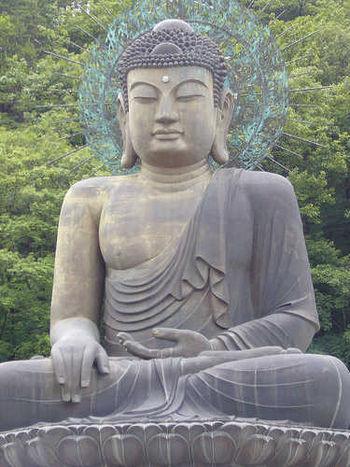
Budda Statue in Seorok Park., Korea (Photo credit: Wikipedia)
Buddhists stress spiritual growth and the afterlife, rather than achievement while in this world. Buddhism is practiced mainly in Southeast Asia. It does not support the caste system so individuals can work with individuals from different classes.
Confucianism
Confucianism is practiced mainly in China. “It teaches the importance of attaining personal salvation through right action. ”Confucianism is not concerned with the supernatural and has little to say about the concept of a supreme being or an afterlife. The needs for high moral and ethical conduct and loyalty to others are central in Confucianism.” The three key teachings of Confucianism are: loyalty, reciprocal obligations, and honesty.
Language refers to the spoken and unspoken means of communication. It is one of the defining characteristics of culture. English is the language of international business; it is important to know some of the local language when working in another country. “Unspoken language refers to nonverbal communication such as facial expressions, personal space, and hand gestures. Managers who fail to understand the nonverbal cues of another culture may experience a breakdown in communication.”
Formal education is instrumental in shaping many cultural values and norms. It is the medium through which individuals learn language, conceptual, and mathematical skills. The knowlege base contributes to the country’s competitive advantage
Culture in the Workplace can be understood using Geert Hofestede’s Model. Hofstede conducted what is probably the most famous study about the connection between culture and values in the workplace; involving IBM employees worldwide. He identified four dimensions to describe cultures: power distance, individualism vs. collectivism, uncertainty avoidance, and masculinity vs. femininity.
1. Power distance focuses on how a society deals with the fact that people are unequal in physical and intellectual capabilities.
2. Individualism versus collectivism focuses on the relationship between the individual and his or her fellows.
3. Uncertainty avoidance measures the extent to which different cultures socialize their members into accepting ambiguous situations and tolerating ambiguity.
4. Masculinity versus femininity looks at the relationship between gender and work roles.
5. “Hofstede later expanded his study to include a fifth dimension called Confucian dynamism which captures attitudes toward time, persistence, ordering by status, protection of face, respect for tradition, and reciprocation of gifts and favors.”
Cultural Change evolves over time as countries become economically stronger.
“Individuals and firms must develop cross-cultural literacy. International businesses that are ill informed about the practices of another culture are unlikely to succeed in that culture. One way to develop cross-cultural literacy is to regularly rotate and transfer people internationally.” Managers need to be aware of ethnocentric behavior, or a belief in the superiority of their own culture.
To experience cultural differences create a mock business meeting at Executive Planet. Their web site, {http://www.executiveplanet.com/index.php?title=Main_Page}, has guidelines for doing business in different countries.
The connection between culture and competitive advantage is important because it suggests which countries are likely to produce the most viable competitors, and it has implications for the choice of countries in which to locate production facilities and do business.

English: His Royal Highness Prince Abdullah, Saudi Arabia,at Horasis Global India Business Meeting 2009 (Photo credit: Wikipedia)

